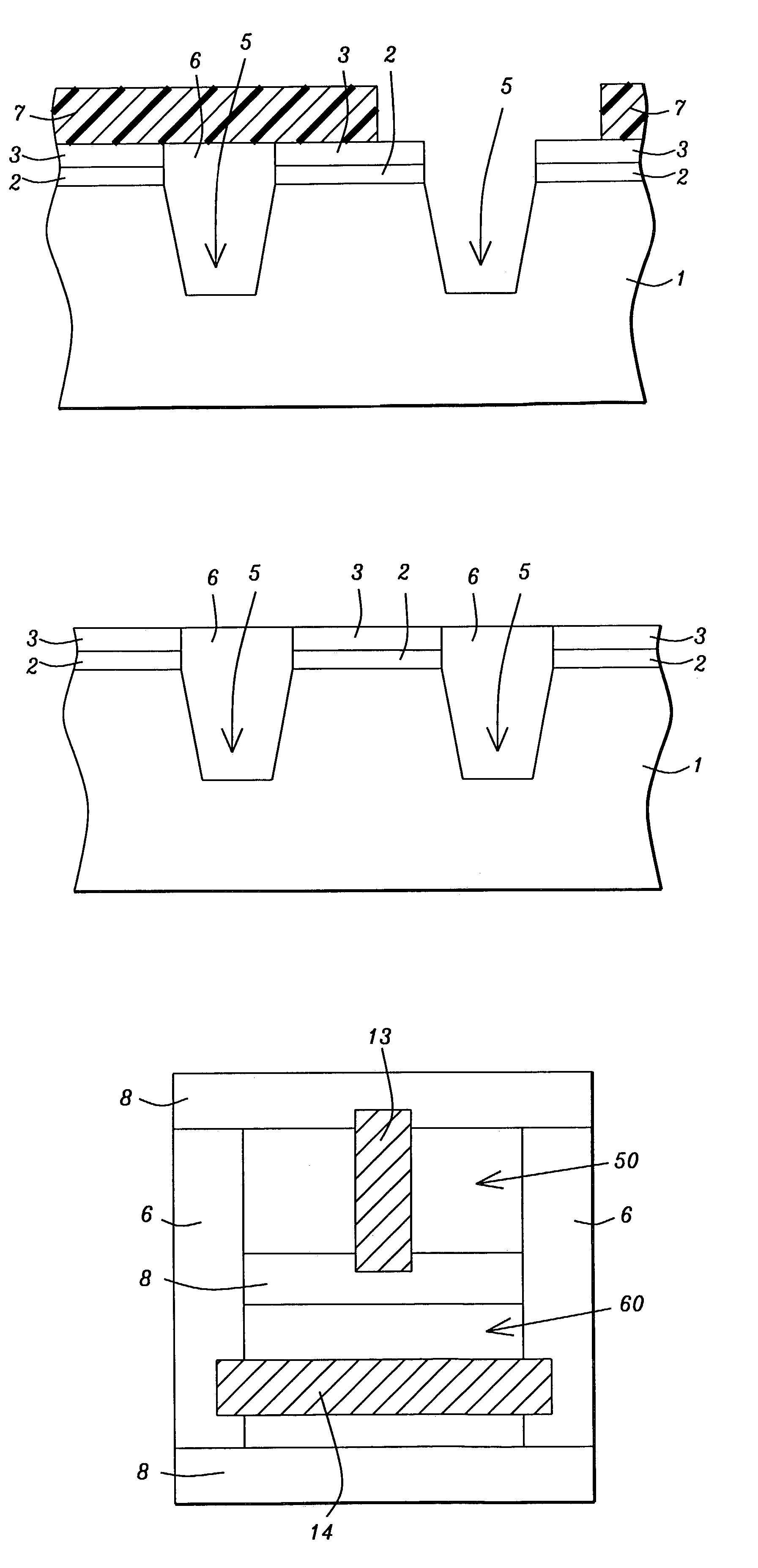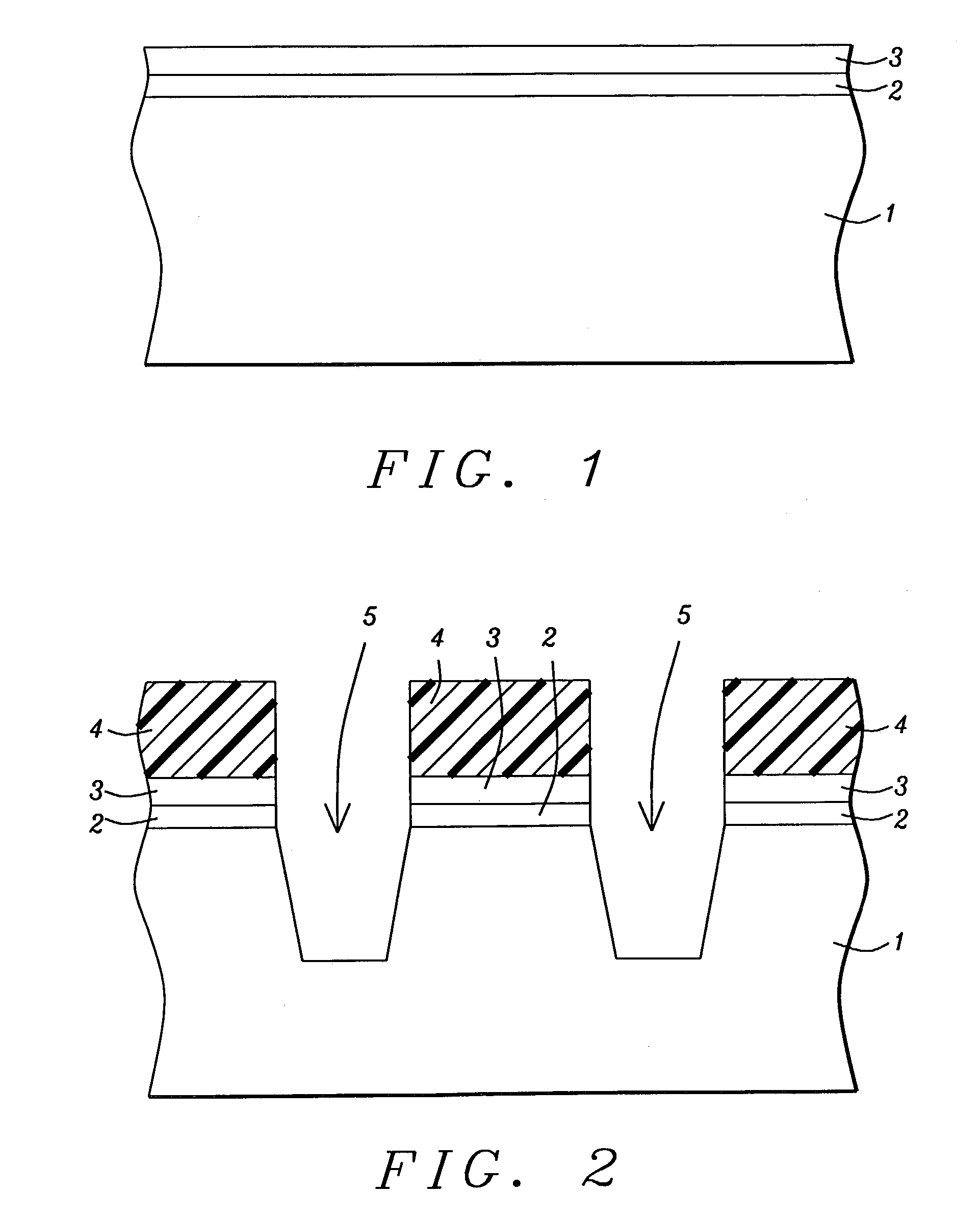Silicon strain engineering accomplished via use of specific shallow trench isolation fill materials
a technology of filling material and silicon strain, which is applied in the direction of semiconductor devices, basic electric elements, electrical equipment, etc., can solve the problems of significant cost and process complexity in the process sequence of devices used to fabricate mosfet devices, and achieve the effects of improving the performance of mosfet and vertical bipolar devices, improving performance, and improving performan
- Summary
- Abstract
- Description
- Claims
- Application Information
AI Technical Summary
Benefits of technology
Problems solved by technology
Method used
Image
Examples
Embodiment Construction
[0016]The method of forming MOSFET devices featuring channel regions formed in strained silicon layers, as well as the method of fabricating vertical bipolar devices featuring base regions formed in a strained silicon regions, will now be described in detail. These methods based on current 0.13 um CMOS generation technology can be extended to future 90 nm generation and beyond. A first embodiment of this invention is directed at the fabrication of MOSFET devices in which the channel region of both P channel, (PMOS), and N channel (NMOS), devices are located in strained silicon layers, which in turn are formed via a material mis-match between silicon and the dielectric material used to fill adjacently located TI regions. A P type semiconductor substrate 1, comprised of single crystalline silicon featuring a crystallographic orientation, is used and schematically shown in FIG. 1. Silicon oxide layer 2, to be used as a pad oxide layer, is typically grown via thermal oxidation procedur...
PUM
 Login to View More
Login to View More Abstract
Description
Claims
Application Information
 Login to View More
Login to View More - R&D
- Intellectual Property
- Life Sciences
- Materials
- Tech Scout
- Unparalleled Data Quality
- Higher Quality Content
- 60% Fewer Hallucinations
Browse by: Latest US Patents, China's latest patents, Technical Efficacy Thesaurus, Application Domain, Technology Topic, Popular Technical Reports.
© 2025 PatSnap. All rights reserved.Legal|Privacy policy|Modern Slavery Act Transparency Statement|Sitemap|About US| Contact US: help@patsnap.com



